Romanian Revival architecture
Top:C.N. Câmpeanu House by Constantin Nănescu, in Bucharest, c.1923;[1] Centre: The Cloister of the Stavropoleos Monastery by Ion Mincu, in Bucharest, c.1899-1910;[2] Bottom: The Marmorosch Blank Bank Palace in Bucharest, 1915-1923[3] | |
| Years active | late 19th century–first half of the 20th century |
|---|---|
Romanian Revival architecture (a.k.a. Romanian National Style, Neo-Romanian, or Neo-Brâncovenesc; Romanian: stilul național român, arhitectura neoromânească, neobrâncovenească) is an architectural style that has appeared in the late 19th century in Romanian Art Nouveau,[4] initially being the result of the attempts of finding a specific Romanian architectural style. The attempts are mainly due to the architects Ion Mincu (1852–1912), and Ion N. Socolescu (1856–1924). The peak of the style was the interwar period. The style was a national reaction after the domination of French-inspired Classicist Eclecticism. Apart from foreign influences, the contribution of Romanian architects, who reinvented the tradition, creating, at the same time, an original style, is manifesting more and more strongly.[5] Ion Mincu and his successors, Grigore Cerchez, Cristofi Cerchez, Petre Antonescu, or Nicolae Ghica-Budești declared themselves for a modern architecture, with Romanian specific, based on theses such as those formulated by Alexandru Odobescu around 1870:
"Study the remains – no matter how small – of the artistic production of the past and make them the source of a great art (...) do not miss any opportunity to use the artistic elements presented by the Romanian monuments left over from old times; but transform them, change them, develop them ..."
Of course, such a program was not easy to accomplish. All the more so as the new types of urban architecture, especially those with many floors, demanded simple solutions, which hardly supported the world of medieval forms and ornaments or that of folklore, the main sources of inspiration of the style.
19th century nationalism combined without problems with Europeanism and admiration for the West, Romania wanting to prove that it is a European country. After 1900, without abandoning European trends, the emphasis is more on values with Romanian specificity. As a result, the Parisian and Viennese buildings of the late nineteenth century are contrasted with a "Romanian style". The popularity of the Romanian style continues and intensifies in the interwar period.[6] The heyday of the style were the 1920s, when many Romanian Revival houses, churches and institution buildings were erected, both in Bucharest and in the rest of Greater Romania. The trend had also extended into the decorative arts from the start, with examples of Neo-Romanian design of furniture and other objects appearing, but also illustrations and graphic design (including stamps and magazine covers).
Origins
Romanian Revival architecture is a revival of the
Brâncovenesc churches usually have façades decorated with reliefs, most churches being white, while some have elaborate paintings on the façades (like the Stavropoleos Monastery from Bucharest). The walls of their interiors are filled with Byzantine style frescos. Above their main door there is a pisanie, which is an inscribed stone plaque. The inscription usually includes a religious invocation, the name of the founder or founders, the date of construction, the motivation of the building, the circumstances of the time and other data.
Characteristics
-
Tiled roofs - Nicolae Minovici House Bucharest
-
Metal roofs, with diamond-shaped parts - Strada Constantin C. Nottara no. 6, Bucharest
-
Complex knots (aka interlaces) - Brătianu Settlements Bucharest
-
Complex foliage spirals (aka rinceaux) - Brătianu Settlements
-
Elements brought from peasant houses - Brătianu Settlements
-
Elements brought from religious architecture - Brătianu Settlements
-
Elements brought from Byzantine architecture (in this case the fish, aka ichthys, an early Christian symbolism) - Strada Louis Pasteur no. 24, Bucharest
-
Elements grouped in threes (in this case three arches) - Strada Pictor Constantin Stahi no. 14, Bucharest
-
Building structure inspired by cule - Strada Grigore Romniceanu no. 54, Bucharest
-
Trilobed arches - Cantacuzino Castle in Bușteni
The influences of peasant houses were manifested through ornaments and elements used under various interpretations, but which retain their origin. Among the elements are the
).The buildings often have a medieval castle or fortress look, with
Representative architects
The first generation of Romanian architects, creators and promoters of the Romanian Revival style, is composed of Ion Mincu (1852–1912), Ion N. Socolescu (1856–1924) and Grigore Cerchez (1850–1927).[10]
Ion Mincu
-
Lahovari House, now in the courtyard of the Cantacuzino Hospital in Bucharest (1885-1886), Strada Ion Movilă no. 5[11]
-
Kiseleff Roadside Buffet in Bucharest (1889-1892), Șoseaua Kiseleff no. 4, now the Casa Doina Restaurant[12]
-
Central Girls' School in Bucharest (1890), Strada Icoanei no. 3-5[13]
-
The Cloister of the Stavropoleos Monastery in Bucharest (c.1899–1910), Strada Poștei no. 6[2]
-
Design for the Bucharest city hall (1900)
-
Nicolae Petrașcu House (1900–1904), Piața Romană no. 1[14]
-
Ghica Family Tomb in the Bellu Cemetery in Bucharest (unknown date)[15]
-
Cantacuzino Tomb in the Bellu Cemetery (unknown date)[16]
-
Gheorghieff Brothers Tomb in the Bellu Cemetery (unknown date)
-
Iacob Lahovary Tomb in the Bellu Cemetery (unknown date)
His first attempts in Bucharest, after his return from studies in Paris, were the
Petre Antonescu
-
Study of Romanian Revival architecture for the Exhibition of Artistic Youth (1904)
-
The Oprea Soare House in Bucharest (1914), Strada Poenaru Bordea no. 2
-
Part of the façade of the Marmorosch Blank Bank Palace in Bucharest (1915–1923), Strada Doamnei no. 2-6
-
TheByzantine Revivalinfluences
One of the most vigorous and typical representatives of Romanian Revival architecture was
In other art media
-
Romanian Revival display cases in the George Severeanu Museum, Bucharest, in which Ancient ceramic is exhibited, unknown designer, unknown date, wood and glass
-
Picture frame sold in the Dimitrie Gusti National Village Museum, Bucharest, unknown designer, unknown date, wood
-
Coffee table, unknown designer, early 20th century, wood
-
Desk, unknown designer, early 20th century, wood
-
Design for living room furniture, by Nicolae Ghica-Budești, 1906, ink on paper
-
Curtain design, by Ion Theodorescu-Sion, unknown date, watercolour
-
Illustration for the Ileana magazine, by Ludovic Basarab, unknown date, ink on paper
-
Vessel design, by Apcar Baltazar, unknown date, watercolour
-
Stamp with king Carol I, unknown illustrator, 1906, ink on paper
-
Stamp with king Carol I, unknown illustrator, 1906, ink on paper
-
Stamp with queen Elisabeth, by C. Stengel, 1906, ink on paper
-
Stamp with queen Elisabeth weaving, by C. Stengel, 1906, ink on paper
-
The Magazine of the Holy Synod from March 1927, unknown illustrator, ink on paper
In addition to architecture, the Romanian Revival style manifested itself in other media, including graphic design, pottery, furniture and illustration. There are good examples of Romanian Romanian furniture in the George Severeanu Museum in Bucharest, mostly display cases, where ancient Greek and Etruscan vessels are exhibited.
Besides buildings, architect Nicolae Ghica-Budești also produced Romanian Revival furniture. His example followed by artists like O. Roguschi, Gh. Lupu, A. Clevel, Hugo Storck, who made furniture in this style. During the 1900s, Apcar Baltazar is preoccupied with the creating a new Romanian style in decorative arts. In November 1908, an essay called "Spre un stil românesc" (Towards a Romanian style) is published in the Viața Românească (Romanian Life) magazine. Using example from world art history, he tries to find ideas for his creation and for how an authentic Romanian style should look like. As a key feature of this style, he recommends elements of Byzantine art, present in medieval Romanian architecture. He was an advocate for introducing them in an harmonious way, not straight up copying. Baltazar was also an admirer of both peasant and religious art. A motif he used in multiple designs is the stylized rooster.
Al. Tzigara-Samurcaș was a militant for the conservation of traditional peasant art. He was also an influence for Apcar Baltazar.[19]
Periods
In general, architectural styles popular in a period tend to influence each other, sometimes leading to mixes. The Romanian Revival is no exception. Because of this, the year when many buildings were erected can be approximated more or less easily.
Early (before 1906)
-
Entrance of the Central Girls' School, Bucharest, by Ion Mincu, 1890.[13] Notice the pediment above the door, that makes this entrance similar with one of a Neoclassical building
-
Folk Art Museum,rinceaux) may have been inspired by Islamic architecture
-
Strada Polonă no. 13, Bucharest, c.1900, unknown architect. Notice how highly decorated this house is. Also, the small brown wooden pediment above the door is fully Neoclassical
-
Strada Grigore Alexandrescu no. 42, Bucharest, c.1900, unknown architect. This house is a mix of Romanian Revival and Beaux-Arts architecture. The shape of the windows may have been inspired by the Islamic the world
-
Strada Franzelarilor no. 2A, Bucharest, unknown architect, c.1900. This house stands out through its polychrome glazed ceramic ornaments, similar with the ones of some churches from Moldavia, like the Saint Nicholas Princely Church in Iași
-
Diamandi House, Bucharest, unknown architect, c.1900. While all the ornaments are Romanian Revival, the structure of the house is specific to the Belle Époque: a house with three or two windows towards the street, garden, entrance in the garden, and only one story high
-
Base of a Romanian Revival lighting pole at the intersection of Streets Popa Tatu and Mircea Vulcănescu, Bucharest, unknown architect, c.1900
The Belle Époque is the period in which the style was created. Because it was not fully defined until the 1906 General Romanian Exhibition in the
Mature (1906-early 1930s)
-
Palace of the Arts, part of the 1906 General Romanian Exhibition in the Carol Park, Bucharest, by Victor Ștefănescu and Ștefan Burcuș, 1905-1906
-
Interior of the Palace of the Arts, by Victor Ștefănescu and Ștefan Burcuș, 1905-1906
-
Nicolae Minovici House, today the Nicolae Minovici Folk Art Museum, Bucharest, by Cristofi Cerchez, 1906-1907[20]
-
A. Mincu House, Bucharest, by Arghir Culina, 1910[21]
-
Door of the Laurențiu and Louise Steinebach House, Bucharest, by Alfred Popper, 1915-1916[22]
-
Byzantine Revivalwindow detail of the Laurențiu and Louise Steinebach House with peacocks drinking from a cup, by Alfred Popper, 1915-1916
-
Strada Grigore Romniceanu no. 54, Bucharest, unknown architect, c.1920
-
C.N. Câmpeanu/Alfred E. Gheorghiu House, Bucharest, by Constantin Nănescu, c.1923[23]
-
Apartment building built by the Communal Society for Affordable Housing for the State Monopoly Company in the Lahovary Square, Bucharest, by Lucian Teodosiu, 1926-1929[24]
-
Saint George Grivița Church (Calea Griviței no. 218), Bucharest, by Constantin Pomponiu, 1926-1931[25]
-
Communal Society for Affordable Housing Building in the C.A. Rosetti Square, Bucharest, by Virginia Andreescu Haret, 1927[26]
-
Cezar Golici House, Bucharest, by Virginia Andreescu Haret, 1928
To celebrate the 25th anniversary of the coronation of king Carol I of Romania, 40 years of his reign, 25 years since proclamation of the Kingdom of Romania, and 1800 years since the Romans came in the Dacian province, the General Romanian Exhibition took place in the Carol Park (Park of Freedom) of Bucharest in 1906. Most of the pavilions of the fair were temporary structures, the only ones that survived being the Silver Knife Church, the Roman Arenas, the Filaret Electricity Station, small pavilions, the Mining Ministry fountain, and the water tower, designer to look like a medieval relic from the time of Vlad the Impaler.[27][28] The 1906 General Romanian Exhibition is important because this when the style started to be fully developed.
Buildings from this phase have a consistent look. The 1920s was the peak of popularity, multiple schools, houses and institutions built after WW1 being Romanian Revival. Sometimes it was mixed with Art Deco, a style equally popular in the 1920s.
Late (late 1930s and 1940s)
-
Palace of the Patriarchate, Bucharest, by George Simota, 1932-1936[30]
-
Romanian restaurant at the 1939 World's Fair, New York, by Octav Doicescu, 1939[32]
Under the pressures of Modernism, the style became more and more simplified. Initially, the supporters of the Romanian Revival style rejected Modern architecture. They saw Modern buildings as creations that lack a local spirit. However, their opposition faded with time, leading to mixes of the two movements. Multiple architects, without dropping elements inspired by local tradition, will adopt new materials and techniques. Romanian Revival proportions and volumes were kept, but ornaments were highly simplified or sometimes were just nonexistent. Buildings were reduced to essences.[33]
Notable examples


Romania
- Alexandria
- Saint Alexander Cathedral (Strada Independenței 7-9)
- Bucharest
- Nicolae Minovici Villa(Strada Doctor Minovici Nicolae 1)
- Sector 1 Town Hall (Bulevardul Banul Manta 9)
- Gheorghe Tătărescu House (Strada Polonă 19)
- Hagi-Theodoraky House (Șoseaua Kiseleff 57)
- Romanian Peasant Museum (Șoseaua Kisseleff 3)
- Dissescu House (Calea Victoriei 196)
- Amza's Church (Strada Biserica Amzei 12)
- Lahovari House (Strada Ion Movilă 5)
- Oprea Soare House (Strada Poenaru Bordea 2)
- Kiseleff Palace (Strada Barbu Ștefănescu Delavrancea 6A)
- Gheorghe Petrașcu House (Piața Romană 5)
- Interior of the Ion Mincu House, its exterior being just Eclectic (Strada Arthur Verona 19)
- Central School (Strada Icoanei 3-5)
- Elie Radu House (Strada Alexandru Donici 40)
- Bucharest City Hall (Bulevardul Regina Elisabeta 47)
In addition, there are areas in Bucharest where most houses are Romanian Revival, such as Cotroceni and Dorobanți.
- Brașov
- Brașov Opera (Strada Bisericii Române 51)
- Brăila
- Palace of Agriculture (Calea Călărașilor 52)
- Bușteni
- Cantacuzino Castle (Strada Zamora 1)
- Buzău
- City hall (Piața Daciei 1)
- Constanța
- Constanța History and Archaeology Museum (Piața Ovidiu 12)
- Constanța Museum of Popular Art (Bulevardul Tomis 32)
- Craiova
- Former Pallace Hotel (Strada Cuza Alexandru Ioan 1)
- Museum of Oltenia (Strada Popa Șapcă 8 - Sciences of Nature, Strada Madona Dudu 14 - Archaeology, Strada Matei Basarab 16 - Ethnography)
- Galați
- Palace of Navigation (Strada Portului 34)
- Iași
- Sonet Villa (Strada Rece 5)
- Oradea
- Iuliu Maniu Greek Catholic College (Strada Iuliu Maniu 5)
- Ploiești
- Ion Luca Caragiale National College (Strada Gheorghe Doja 98)
- National Bank (Strada Tache Ionescu 1)
- Sibiu
- Oașia Building (Strada Turnului 23)
- Faculty of Orthodox Theology (Strada Mitrolopiei 20)
- Gheorghe Lazăr Boarding School building (Strada Turismului 15)
- Târgu Jiu
- Tudor Vladimirescu National College (Strada Unirii 13)
- Timișoara
- Romanian National Opera arcades (Strada Mărășești 2)
Moldova
- Bălți
- Saint Constantine and Elena Cathedral
- Residence of the Bishop of Hotin (Strada Visarion Puiu 7)
- Tighina
- Mulmana Hospital
Albania
- Sarandë
- Nicolae Iorga House (Rruga Mitat Hoxha), headquarters of the former Romanian Institute in Albania
Bulgaria
- Silistra
- Regional History Museum
Ukraine
- Khotyn
- House of Culture (Vulytsya Nezalezhnosti, 19-17)
- Chernivtsi
- St. Nikolai Church
- Holy Apostles Peter and Paul Church
- Palace of the border guards
- Priests' dormitory building
See also
- Architecture of Romania
- Byzantine Revival architecture
Notes
- ISBN 978-973-1872-30-8.
- ^ a b Celac, Carabela & Marcu-Lapadat 2017, p. 49.
- ^ Celac, Carabela & Marcu-Lapadat 2017, p. 53.
- ^ Paul, Constantin (1977). Mică Enciclopedie de Arhitectură, Arte Decorative și Aplicate Moderne (in Romanian). Editura Științifică și Enciclopedică. p. 109.
- ISBN 978-606-537-382-2.
- ISBN 978-973-50-5470-0.
- ^ Celac, Carabela & Marcu-Lapadat 2017, p. 216.
- ISBN 978-606-33-1053-9.
- ISBN 978-606-537-382-2.
- ISBN 978-973-1872-51-3.
- ^ Celac, Carabela & Marcu-Lapadat 2017, p. 124.
- ^ Celac, Carabela & Marcu-Lapadat 2017, p. 153.
- ^ a b Celac, Carabela & Marcu-Lapadat 2017, p. 123.
- ^ Celac, Carabela & Marcu-Lapadat 2017, p. 80.
- ^ Rîmniceanu, Marin Sorinescu (1924). Istoria Artelor (in Romanian). p. 158.
- ^ Rîmniceanu, Marin Sorinescu (1924). Istoria Artelor (in Romanian). p. 158.
- ^ Paul, Constantin (1977). Mică Enciclopedie de Arhitectură, Arte Decorative și Aplicate Moderne (in Romanian). Editura Științifică și Enciclopedică. p. 109 & 110.
- ^ Paul, Constantin (1977). Mică Enciclopedie de Arhitectură, Arte Decorative și Aplicate Moderne (in Romanian). Editura Științifică și Enciclopedică. p. 110.
- ISBN 978-606-33-1053-9.
- ^ Celac, Carabela & Marcu-Lapadat 2017, p. 158.
- ISBN 978-973-1872-30-8.
- ISBN 978-973-1872-51-3.
- ISBN 978-973-1872-30-8.
- ISBN 978-973-0-28434-8.
- ISBN 978-973-0-28434-8.
- ISBN 978-973-0-28434-8.
- ^ Celac, Carabela & Marcu-Lapadat 2017, p. 107.
- ISBN 978-973-1872-51-3.
- ^ "Arh. OCTAV DOICESCU: Restaurantul Românesc Băneasa (în prezent Casa Albă), 1930". octavdoicescu.blogspot.com. Retrieved 6 March 2023.
- ISBN 978-606-33-1053-9.
- ISBN 978-606-33-1053-9.
- ISBN 978-606-33-1053-9.
- ISBN 978-606-33-1053-9.
References
- Celac, Mariana; Carabela, Octavian; Marcu-Lapadat, Marius (2017). Bucharest Architecture - an annotated guide. Order of Architects of Romania. ISBN 978-973-0-23884-6.



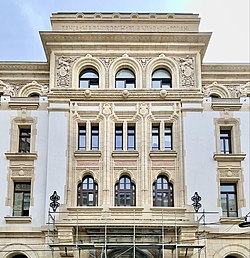

![The main building of the Mogoșoaia Palace, Mogoșoaia, Romania, early 18th century[7]](http://upload.wikimedia.org/wikipedia/commons/thumb/e/ee/Palatul_Mogo%C8%99oaia_02.jpg/383px-Palatul_Mogo%C8%99oaia_02.jpg)
![The Stavropoleos Church, downtown Bucharest, 1724[8]](http://upload.wikimedia.org/wikipedia/commons/thumb/1/1d/4%2C_Strada_Stavropoleos%2C_Bucharest_%28Romania%29_1.jpg/303px-4%2C_Strada_Stavropoleos%2C_Bucharest_%28Romania%29_1.jpg)



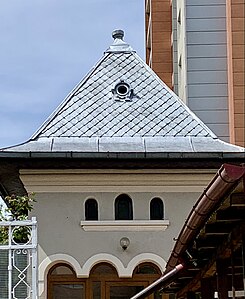






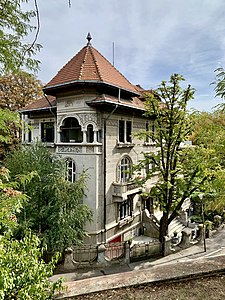

![Lahovari House, now in the courtyard of the Cantacuzino Hospital in Bucharest (1885-1886), Strada Ion Movilă no. 5[11]](http://upload.wikimedia.org/wikipedia/commons/thumb/a/ae/5-7%2C_Strada_Ion_Movil%C4%83%2C_Bucharest_%28Romania%29.jpg/469px-5-7%2C_Strada_Ion_Movil%C4%83%2C_Bucharest_%28Romania%29.jpg)
![Kiseleff Roadside Buffet [ro] in Bucharest (1889-1892), Șoseaua Kiseleff no. 4, now the Casa Doina Restaurant[12]](http://upload.wikimedia.org/wikipedia/commons/thumb/e/e5/4_%C8%98oseaua_Pavel_D._Kiseleff%2C_Bucharest_%2805%29.jpg/345px-4_%C8%98oseaua_Pavel_D._Kiseleff%2C_Bucharest_%2805%29.jpg)
![Central Girls' School in Bucharest (1890), Strada Icoanei no. 3-5[13]](http://upload.wikimedia.org/wikipedia/commons/thumb/f/f8/3-5_Strada_Icoanei%2C_Bucharest_%2848%29.jpg/328px-3-5_Strada_Icoanei%2C_Bucharest_%2848%29.jpg)
![The Cloister of the Stavropoleos Monastery in Bucharest (c.1899–1910), Strada Poștei no. 6[2]](http://upload.wikimedia.org/wikipedia/commons/thumb/f/f9/Biserica_Stavropoleos_din_Bucuresti_-_Curtea_cu_lapidariul.jpg/634px-Biserica_Stavropoleos_din_Bucuresti_-_Curtea_cu_lapidariul.jpg)

![Nicolae Petrașcu House (1900–1904), Piața Romană no. 1[14]](http://upload.wikimedia.org/wikipedia/commons/thumb/2/2e/1%2C_Pia%C8%9Ba_Roman%C4%83%2C_Bucharest_%28Romania%29_8.jpg/299px-1%2C_Pia%C8%9Ba_Roman%C4%83%2C_Bucharest_%28Romania%29_8.jpg)
![Ghica Family Tomb in the Bellu Cemetery in Bucharest (unknown date)[15]](http://upload.wikimedia.org/wikipedia/commons/thumb/f/f2/Grave_of_Ghica_Family_in_the_Bellu_Cemetery_in_Bucharest%2C_Romania_%2817%29.jpg/319px-Grave_of_Ghica_Family_in_the_Bellu_Cemetery_in_Bucharest%2C_Romania_%2817%29.jpg)
![Cantacuzino Tomb in the Bellu Cemetery (unknown date)[16]](http://upload.wikimedia.org/wikipedia/commons/thumb/f/f7/Grave_of_Gheorghe_Grigore_Cantacuzino_in_the_Bellu_Cemetery_in_Bucharest%2C_Romania_%2814%29.jpg/282px-Grave_of_Gheorghe_Grigore_Cantacuzino_in_the_Bellu_Cemetery_in_Bucharest%2C_Romania_%2814%29.jpg)














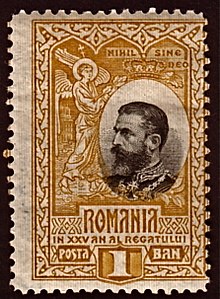




![Entrance of the Central Girls' School, Bucharest, by Ion Mincu, 1890.[13] Notice the pediment above the door, that makes this entrance similar with one of a Neoclassical building](http://upload.wikimedia.org/wikipedia/commons/thumb/a/a6/3-5%2C_Strada_Icoanei%2C_Bucharest_%28Romania%29_1.jpg/202px-3-5%2C_Strada_Icoanei%2C_Bucharest_%28Romania%29_1.jpg)


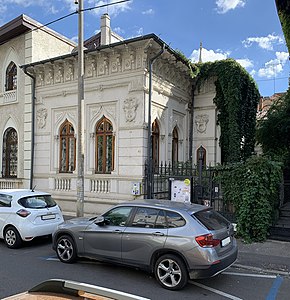


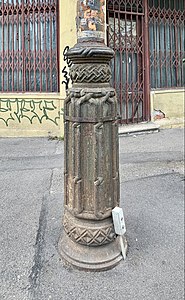


![Nicolae Minovici House, today the Nicolae Minovici Folk Art Museum, Bucharest, by Cristofi Cerchez, 1906-1907[20]](http://upload.wikimedia.org/wikipedia/commons/thumb/2/29/1_Strada_Doctor_Nicolae_Minovici%2C_Bucharest_%2801%29.jpg/250px-1_Strada_Doctor_Nicolae_Minovici%2C_Bucharest_%2801%29.jpg)
![A. Mincu House, Bucharest, by Arghir Culina, 1910[21]](http://upload.wikimedia.org/wikipedia/commons/thumb/6/63/60_Bulevardul_Dacia%2C_Bucharest_%2808%29.jpg/297px-60_Bulevardul_Dacia%2C_Bucharest_%2808%29.jpg)
![Door of the Laurențiu and Louise Steinebach House, Bucharest, by Alfred Popper, 1915-1916[22]](http://upload.wikimedia.org/wikipedia/commons/thumb/4/41/18_Bulevardul_Eroii_Sanitari%2C_Bucharest_%2803%29.jpg/336px-18_Bulevardul_Eroii_Sanitari%2C_Bucharest_%2803%29.jpg)


![C.N. Câmpeanu/Alfred E. Gheorghiu House, Bucharest, by Constantin Nănescu, c.1923[23]](http://upload.wikimedia.org/wikipedia/commons/thumb/8/8e/56%2C_Bulevardul_Dacia%2C_Bucharest_%28Romania%29.jpg/391px-56%2C_Bulevardul_Dacia%2C_Bucharest_%28Romania%29.jpg)
![Apartment building built by the Communal Society for Affordable Housing for the State Monopoly Company in the Lahovary Square, Bucharest, by Lucian Teodosiu, 1926-1929[24]](http://upload.wikimedia.org/wikipedia/commons/thumb/7/7f/Blocul_de_apartamente_construit_de_Societatea_Comunal%C4%83_pentru_Locuin%C8%9Be_Ieftine_pentru_Casa_Autonom%C4%83_a_Monopolurilor_%C3%AEn_Pia%C8%9Ba_Lahovary_din_Bucure%C8%99ti.jpg/273px-Blocul_de_apartamente_construit_de_Societatea_Comunal%C4%83_pentru_Locuin%C8%9Be_Ieftine_pentru_Casa_Autonom%C4%83_a_Monopolurilor_%C3%AEn_Pia%C8%9Ba_Lahovary_din_Bucure%C8%99ti.jpg)
![Saint George Grivița Church (Calea Griviței no. 218), Bucharest, by Constantin Pomponiu, 1926-1931[25]](http://upload.wikimedia.org/wikipedia/commons/thumb/5/55/218_Calea_Grivi%C8%9Bei%2C_Bucharest_%2805%29.jpg/329px-218_Calea_Grivi%C8%9Bei%2C_Bucharest_%2805%29.jpg)
![Communal Society for Affordable Housing Building in the C.A. Rosetti Square, Bucharest, by Virginia Andreescu Haret, 1927[26]](http://upload.wikimedia.org/wikipedia/en/thumb/9/9a/1%2C_Bulevardul_Hristo_Botev%2C_Bucharest_%28Romania%29.jpg/190px-1%2C_Bulevardul_Hristo_Botev%2C_Bucharest_%28Romania%29.jpg)
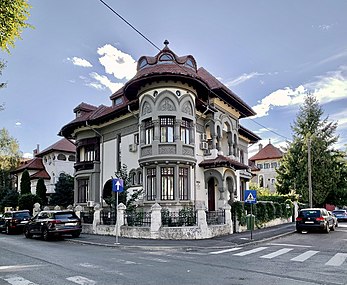
![White House Restaurant (Aleea Privighetorilor no. 31-35), Bucharest, by Octav Doicescu, 1930[29]](http://upload.wikimedia.org/wikipedia/commons/thumb/7/73/Old_photo_of_the_Casa_Alb%C4%83_Restaurant_on_Aleea_Privighetorilor_in_Bucharest%2C_Romania_%2801%29.jpg/362px-Old_photo_of_the_Casa_Alb%C4%83_Restaurant_on_Aleea_Privighetorilor_in_Bucharest%2C_Romania_%2801%29.jpg)
![Palace of the Patriarchate, Bucharest, by George Simota, 1932-1936[30]](http://upload.wikimedia.org/wikipedia/commons/thumb/c/c3/Bucuresti%2C_Romania%2C_Paraclis_si_Resedinta_Patriarhala%3B_B-II-m-A-18571.03_%28detaliu_6_prim%29.JPG/340px-Bucuresti%2C_Romania%2C_Paraclis_si_Resedinta_Patriarhala%3B_B-II-m-A-18571.03_%28detaliu_6_prim%29.JPG)
![Pavilion of Romania at the 1937 World Exhibition, Paris, by Duiliu Marcu, 1937[31]](http://upload.wikimedia.org/wikipedia/commons/thumb/4/43/Pavilionul_Romaniei_la_Expozitia_de_la_Paris_din_1937.jpg/191px-Pavilionul_Romaniei_la_Expozitia_de_la_Paris_din_1937.jpg)
![Romanian restaurant at the 1939 World's Fair, New York, by Octav Doicescu, 1939[32]](http://upload.wikimedia.org/wikipedia/commons/thumb/6/60/Pavilionul_Romaniei%2C_vedere_spre_Casa_romaneasca_%28restaurant_romanesc%29%2C_medaliata_cu_medalia_de_argint_a_orasului_New_York_%2802%29.jpg/198px-Pavilionul_Romaniei%2C_vedere_spre_Casa_romaneasca_%28restaurant_romanesc%29%2C_medaliata_cu_medalia_de_argint_a_orasului_New_York_%2802%29.jpg)